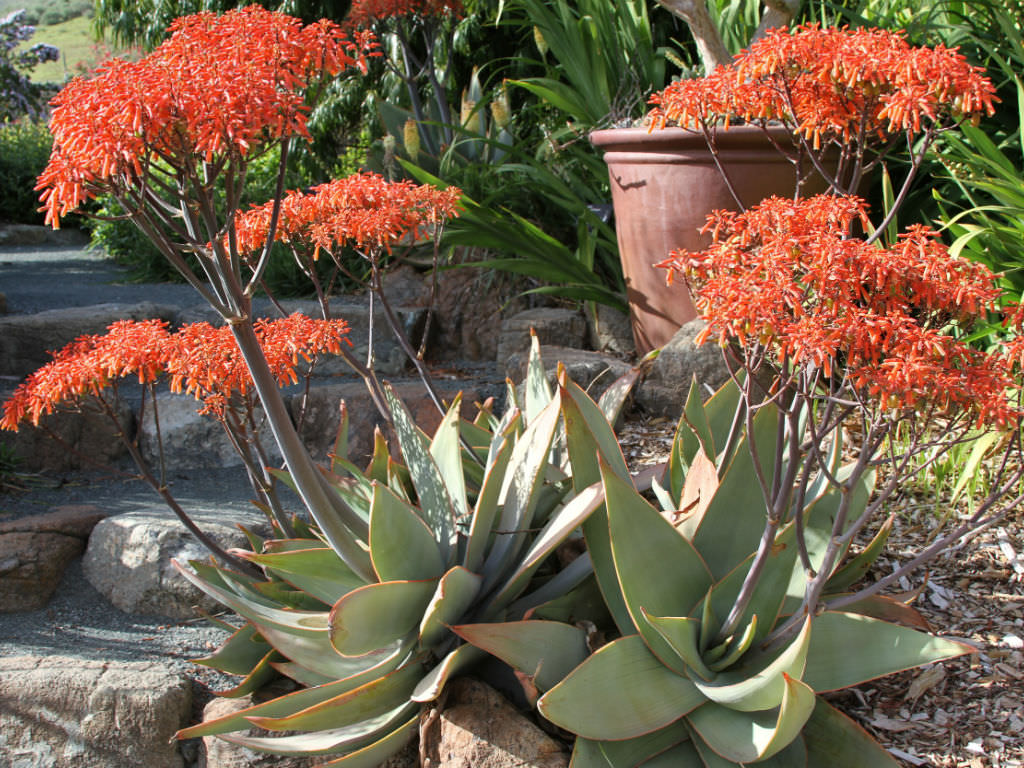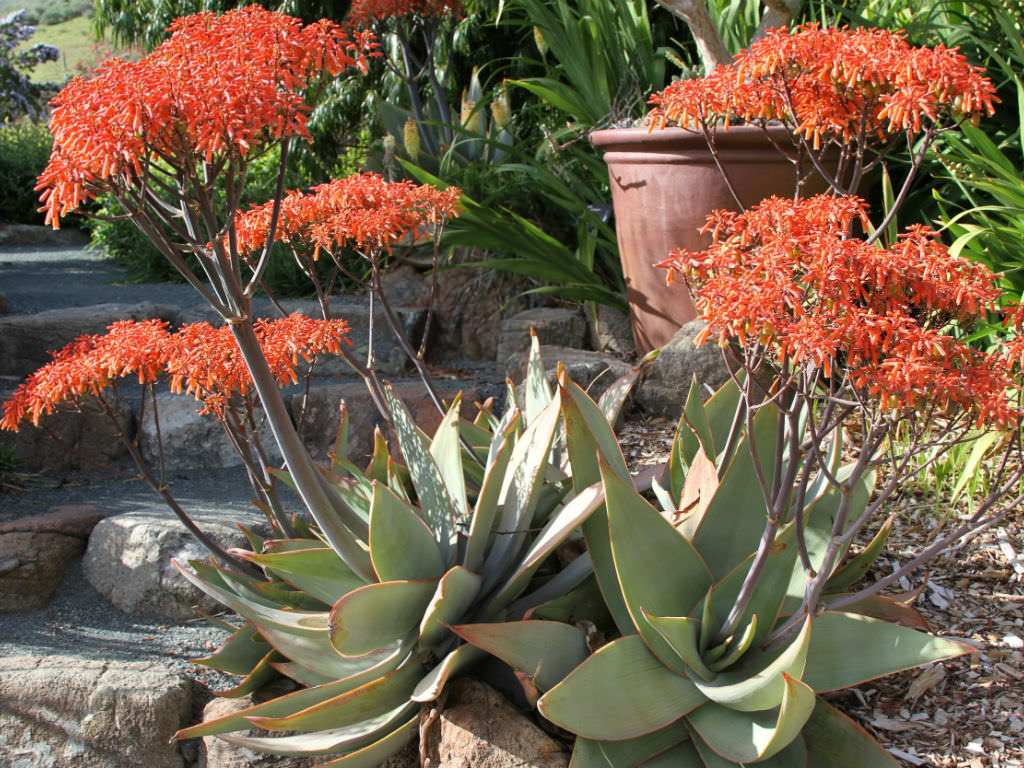Aloe striata
Aloe striata
Couldn't load pickup availability
Aloe striata (Coral Aloe) – A beautiful succulent to about 18 inches tall by 2 feet wide with rosettes of a few flat broad pale gray-green leaves that vary in color depending on the amount of sunlight; in hot full sun the foliage is pinkish and in more shaded spots they are often bluish-green. The leaves have notable dark narrow lines running longitudinally (though more pronounced on the ssp. karasbergensis) and toothless pale reddish nearly transparent leaf margins. In late winter into early spring emerge up to three 2 foot tall stems that branch and hold clusters of coral-red flowers. This plant is often sold as a solitary plant but will slowly produce new rosettes at the base to form a cluster. Plant in full sun to light shade in well-drained soil and irrigate little to regularly – though quite tolerant of dry conditions, a plumper plant can be obtained with regular to occasional irrigation so long as soil drains well. Hardy to 20 to 25 degrees F. Plant in groups or us as a solitary specimen in the ground or in a large container
No pre-treatment of the seeds is required.
The sowing takes place in plastic pots. Commercially available mineral-based cat litter, perlite or pumice gravel is used as the substrate. Distribute the seeds evenly on the substrate. Cover larger seeds thinly with substrate, fine seeds can remain on the surface.
Then place the plastic pot in a zip lock bag - with a pot size of 6 cm, a zip lock bag measuring 120 x 170 mm is recommended. Put enough tap water with a few drops of universal fertilizer in the zip lock bag so that a few mm of water remain after the substrate has been soaked up.
Location: on the windowsill or in a mini greenhouse in partial shade, during the day temperatures should be around 23 - 28 C, at night a little lower at 20 - 22 C. The resulting microclimate creates ideal germination conditions.
Price is for 10 seeds

Collapsible content
Fair Use Disclaimer
Our website may contain content not authorized for use by its owner but use of this material falls under the guidelines of fair use (They are for educational purposes only to show the plant only).
If you want to find our more or own any images displayed on our website and disagree with our assessment it constitutes 'fair use' please click here.

